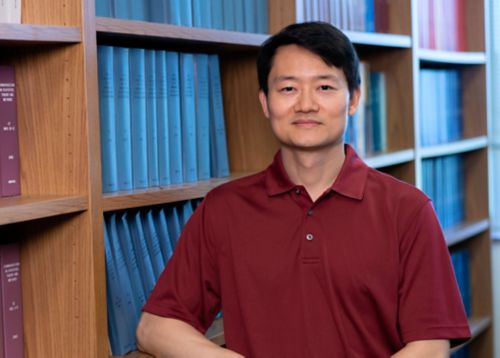St. Jude Family of Websites
Explore our cutting edge research, world-class patient care, career opportunities and more.
St. Jude Children's Research Hospital Home

- Fundraising
St. Jude Family of Websites
Explore our cutting edge research, world-class patient care, career opportunities and more.
St. Jude Children's Research Hospital Home

- Fundraising
St. Jude biostatisticians create a novel clinical trial design software

Corresponding author Haitao Pan, PhD of St. Jude Biostatistics
Clinical trials play a pivotal role in drug development. How those trials are designed is critical for determining if experimental medications are safe, effective and likely to win regulatory approval. Designing studies that provide answers in a timely manner is a particular challenge for drugs being developed to treat rare diseases, including pediatric cancer.
Due to the rarity of the diseases treated at St. Jude Children’s Research Hospital, our scientists have a unique perspective on the challenges presented by small sample size. To that end, researchers in the St. Jude Department of Biostatistics have proposed a new method for designing phase 2 clinical trials using mathematical theory called Bayesian probability—and have even created a free software to implement the approach.
“The existing statistical methods cannot reliably deal with certain clinical outcomes in a small sample size—outcomes such as event-free survival or progression-free survival,” said Haitao Pan, PhD, of St. Jude Biostatistics. “But in pediatric oncology trials, the patient population is often small.”
Pan and Jianrong Wu, PhD, of the Markey Cancer Center at University of Kentucky, are co-corresponding authors of a paper detailing the new approach to trial design. The work appeared in the journal Pharmaceutical Statistics.
Clinical trials primer
Phase 1 clinical trials focus on safety and dosing. The studies are small and mark the transition from the laboratory to the clinic. The studies focus on what the drug does to the body and what the body does to the drug.
With phase 2 clinical trials, the focus shifts to effectiveness. Researchers want to know if the drug works and if patients with a particular disease or condition benefit. To answer the question, phase 2 trials involve more people. They sometimes compare the experimental treatment with a placebo or an existing drug.
Phase 3 trials home in on safety and effectiveness. They involve more patients and last longer. U.S. Food and Drug Administration (FDA) approval depends on phase 3 results.

Co-author Chia-Wei Hsu of St. Jude Biostatistics
Pediatric cancer clinical trial design
In recent years, cancer drug development has broadened from mainly considering randomized controlled trials to subtype-specific clinical trials. The change reflects the growing sophistication of the genomic alterations that drive different tumors.
“Subtype-specific clinical trials often rely on historical controls, which refer to the practice of using data from past studies and administrative databases to estimate potential response to placebo or standard-of-care treatment among patients in an ongoing study,” Pan said.
For example, regulatory agencies such as the FDA now recognize single-arm trials with external historical controls, particularly common in oncology, to assess promising treatments for rare or specific diseases.
“In rare cancers, such as pediatric cancers, using historical data is a pragmatic approach for speeding up clinical trials," Pan said. "The method we developed focuses on a phase 2 trial with characteristics of a single-arm clinical trial using historical control data and a survival endpoint."
In the single-arm study, patients with the targeted medical condition are given the experimental agent and then are followed over time to observe their response without concurrently comparing it to the response to another agent.
"Though the randomized controlled trial is the established gold standard for clinical research, in recent years there has been an increasing number of single-arm studies, particularly in the areas of oncology with phase 1 expansion cohorts, as well as in rare diseases," Pan said. (Expansion cohort means that after phase I, additional patients will be enrolled to further characterize the toxicity and efficacy profile of the studied agent.)
The proposed method, coupled with the Bayesian concept of probability, tackles this issue. The researchers developed an R software package called BayesDesign to allow practitioners to use the methods freely.
“Such an approach is better suited for cases where a randomized trial would be unethical or impractical,” Pan said, “and for smaller trials to facilitate quicker access to novel therapies for patients.”
Sharing ideas
Pan’s lab work was motivated by an ongoing phase 2 study at St. Jude for pediatric patients with newly diagnosed rhabdomyosarcoma. This trial is a phase 1–2 study, and in the phase 2 part the primary endpoint is event-free survival.
An R package BayesDesign is available at no cost to researchers via R CRAN for convenient use of the proposed methods at https://cran.rproject.org/web/packages/BayesDesign/index.html.





